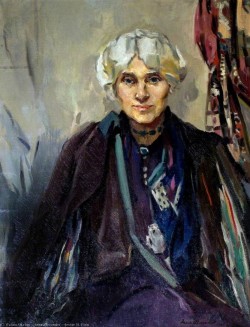
Jessie M. King (1875-1949) was both a student and teacher at the Glasgow School of Art and in 1902 was among the Scottish artists to cause a stir at the International Exhibition of Decorative Art in Turin. The Scottish section of the exhibition organized by Francis (Fra) Newbery, Headmaster of the Glasgow School of Art, and coordinated by designer Charles Rennie Mackintosh featured work by GSA lecturers and senior students and was a synchronized display of spartan simplicity.
It comprised a suite of three spaces, one of which featured Mackintosh and Margaret MacDonald’s “Rose Boudoir.’ Other exhibits included Arts and Crafts furniture designed by E.A. Taylor (who would become Jessie’s husband) for the Scottish firm Wylie and Lochhead, embroidery by Jessie Newbery and Ann MacBeth, drawings by Annie French and designs by Talwin Morris.
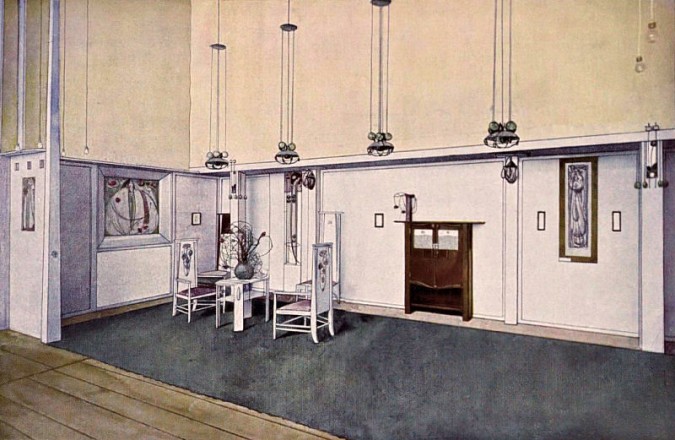
The Rose Boudoir
Jessie entered two pieces into the exhibition; the first a decorative screen designed togther with George Logan, a Wylie and Lochhead designer, the panels of which were embellished with Jessie’s gossamer designs.
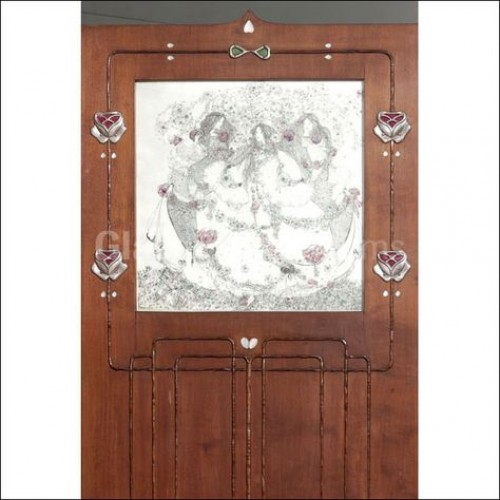
Arts and Crafts Screen designed by Jessie M King and George Logan
The gold medal, however, was won for her binding on “L’Evangile de L’Enfance,” a strikingly stylish Art Nouveau design tooled in gilt on white vellum, executed by the Glasgow book binders, MacLehose. This award brought with it a raft of publicity and commissions as articles about Jessie’s work appeared in art journals around Europe.
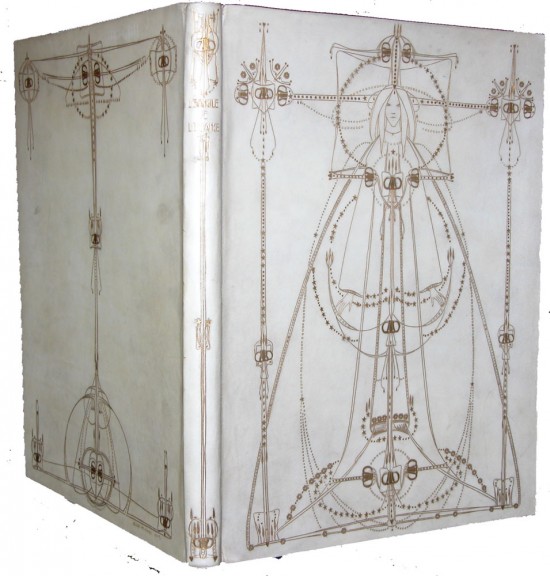
'Evangile de L'Enfance' binding exhibited at the Turin Exhibition and sold by Jonkers in 2003
That year Cedric Chivers of Bath commissioned Jessie to provide a design for one of his “vellucent” bindings. Chivers had invented a process of binding books with an ink and watercolour design sealed under a thin layer of vellum, thus avoiding the wear and damage to which earlier hand painted vellum bindings had been prone. House artists executed many of his bindings, but in 1902 Jessie designed and executed an elaborate Arthurian design for Thomas Lowe’s “The Story of Rosalynde". Completed during the period in which Jessie was both student and teacher at the Glasgow School of Art, this work is typical of the high quality detailed designs she produced in the early 1900’s. Colin White describes it as “The most beautiful, and certainly the most ornate” of Jessie’s vellucent binding designs. In a sales catalogue entitled “Beautiful Book Bindings” Cedric Chivers described The Story of Rosalynde as “characteristic design in fine pen work and colour, graceful in line and charming in its arrangement of pattern” offering it for sale at £6 10 shillings.
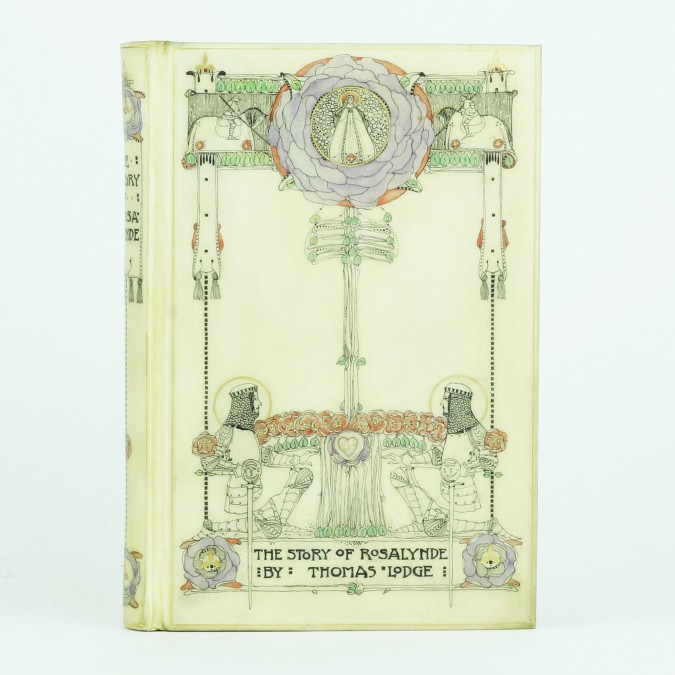
Jessie M King vellucent binding, sold by Jonkers to a US library
Jessie was to design one more vellucent binding for Cedric Chivers, his time the binding adorned her own illustrated version of the Arthurian legend, “The High History of the Holy Graal.” A magnificent production the book features a full white vellum binding over bevelled boards with an ink and watercolour design by Jessie M. King. The central image is one of Jessie’s trademark knights, “Perceval Winneth the Golden Cup” (the black and white drawing features at page 374 of the book). This is set within a shimmering mother of pearl border, together with peripheral designs of roses and shields, including more insets of mother of pearl and elaborate gilt tooling. Internally Jessie provides drawings for the illustrated title page, frontispiece and 22 other full page illustrations all of which are printed on Japanese vellum. The illustrations are extremely detailed line drawings, occasionally with a red decorative border. This book was sold by Chivers at a price of £4.10s.
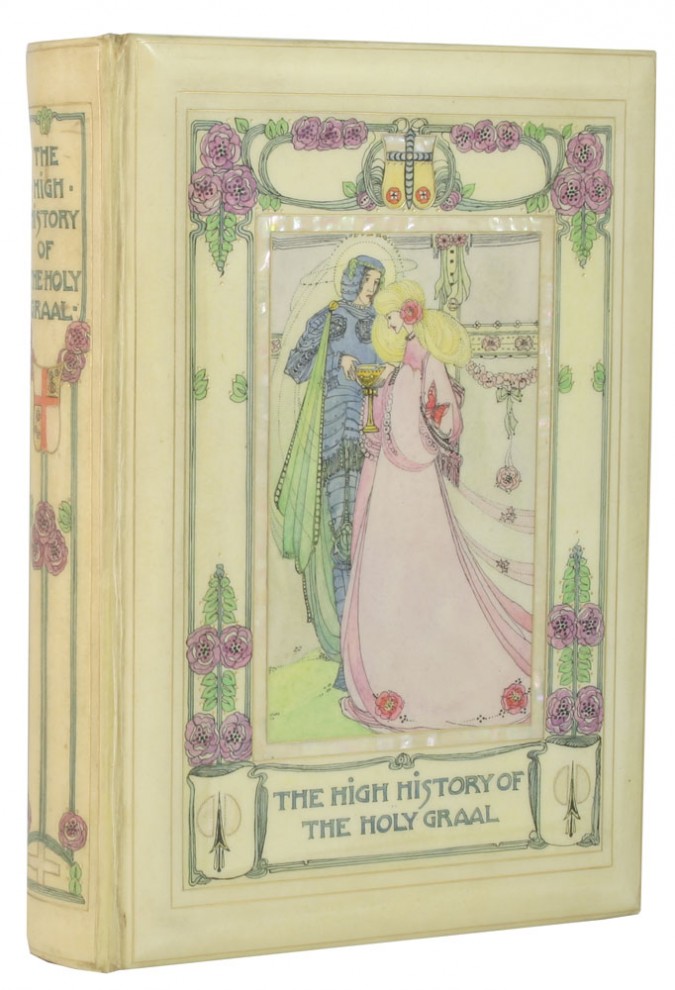
The Holy Graal in vellucent binding, one of four known copies, sold to private collector
It combines not only her magnificent artistry at its best, with the detailed drawings on vellum, but also a premier example of a vellucent binding by Cedric Chivers. With only four copies of the binding known to exist it is undoubtedly the most sought after of the books to be illustrated by Jessie M. King, one might call it the holy grail of King collecting.
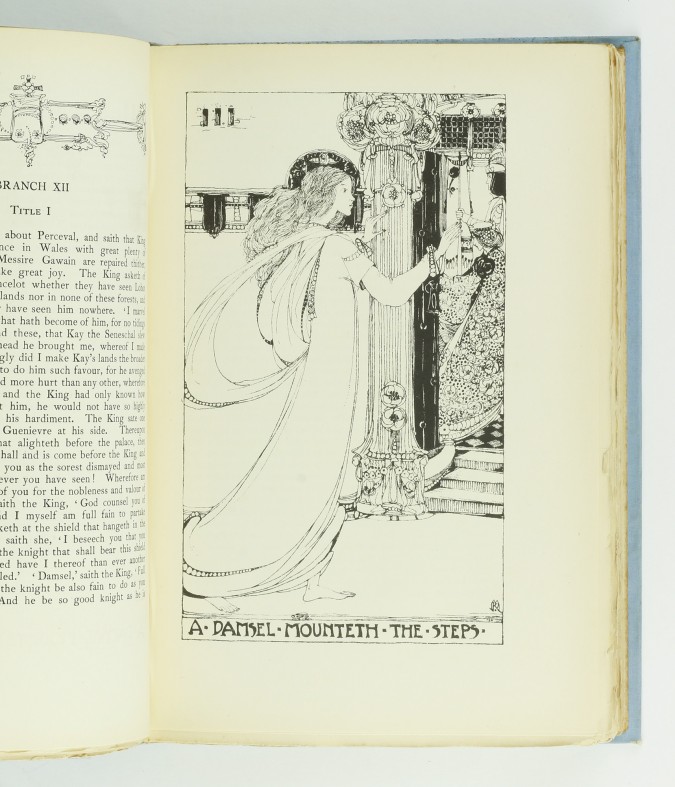
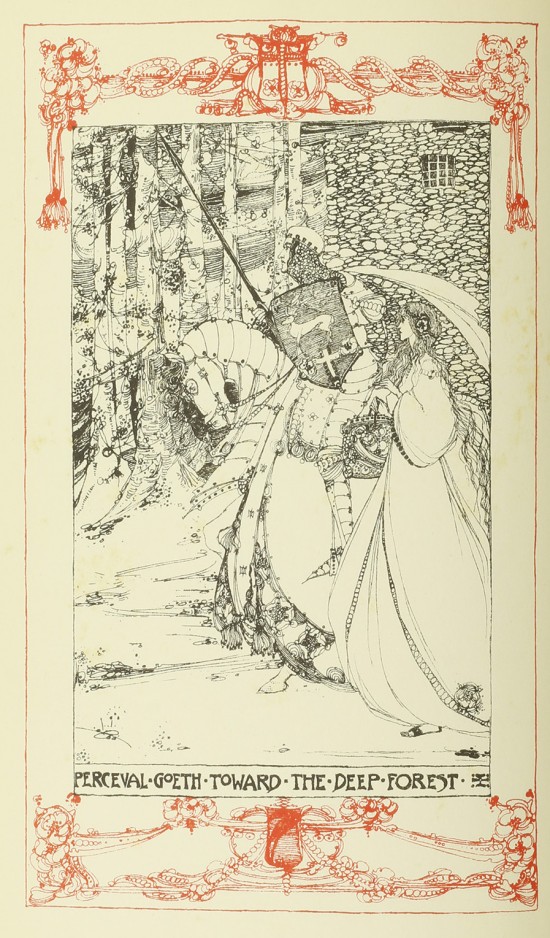
Line drawings for The Holy Graal
Between 1900 and 1910 Glasgow design was at its peak, the distinctive motifs of the Glasgow rose, bluebirds and medieval themes were prominent in the work of Jessie King, Ernest Taylor and their contemporaries and their pieces were highly prized.
Liberty of London was blossoming and their Art Nouveau fabrics, jewellery and metalware were in great demand. Jessie provided several designs for fabrics, which Liberty sold until well into the 1920’s. Jewellery was one of the craft skills Jessie M. King was encouraged to develop at the Glasgow School of Arts, where casting, enamelling and swageing were on the curriculum. In 1905 Liberty were commissioning new designs for their jewellery catalogues and Jessie, who was already providing fabric designs for them, sent a number of sheets of jewellery designs for the firm’s consideration. The drawings were mainly based around floral patterns and drew heavily on her illustrated headings and borders for ‘The Defence of Guenevere’ published in 1904. “Necklaces of gold wire, annealed and twisted into loops and flower heads ... became the solid equivalent of the fine line drawings. Fasces of briars were easily translated into wax patterns for casting.”(Colin White, The Enchanted World of Jessie M. King).
A platinum, moonstone and diamond necklace by Jessie M King in original Liberty box
The Defence of Guenevere illustrated by Jessie M. King, 1904
Part of the Glasgow circle of artists which included Helen (Nell) Brown and Agnes Bankier Harvey, Ernest Archibald Taylor and Jessie M King became close friends, united by their love of design and their outgoing personalities, “a special relationship built up between the laughing extrovert “Jake,” as he called her, and the handsome sophisticated and popular young man.” (Colin White)
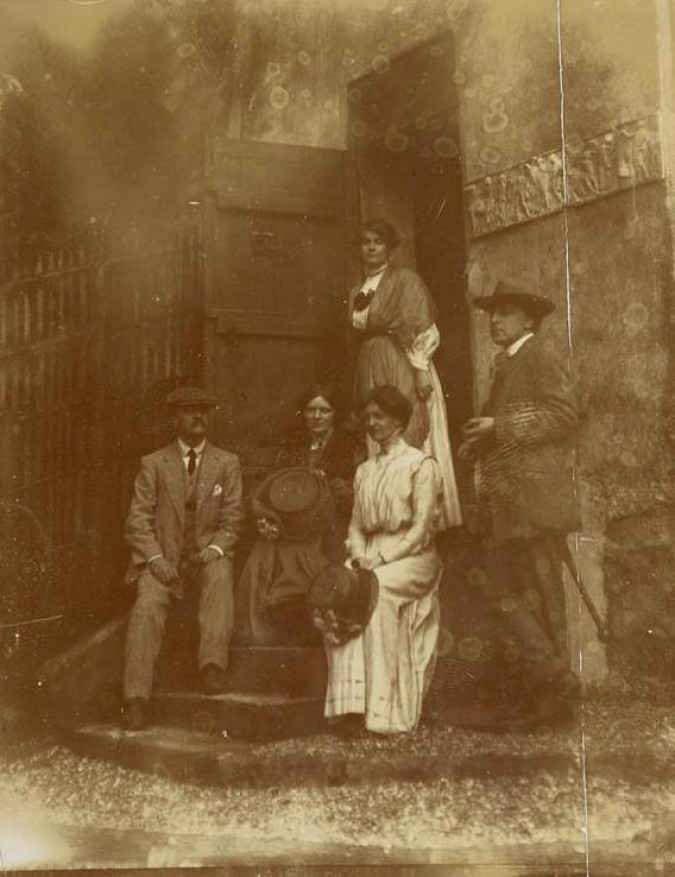
Left to right: Peter Bruce, Jessie M King (standing), Helen (Nell) Brown, Agnes Harvey, E.A. Taylor
Jessie and Ernest married in 1908 when Ernest left Glasgow for a job in Salford. At the same time Jessie bought a cottage, Greengate, in the Scottish town of Kircudbright, though it was to be some years before they took up residence there. The Taylor’s did not enjoy the smog of Manchester and after two years Ernest accepted a teaching role in Paris, where they stayed until the war forced them to return to Scotland and at last they moved into their beloved Greengate in 1915.
The first decade of the 20th century encapsulates perhaps the finest period in the work of Jessie M. King. It is characterized by her line drawings of knights and Pre-Raphalite maidens, highlighted with touches of gold and silver and intricately detailed. “Her early drawings made up of lines and dots so fine that only a sharp-eyed child or an adult equipped with a good magnifying glass could resolve them, are testimony to the acuteness of her vision and the steadiness of her hand. Her preference for drawing in pen and ink on vellum was a mark of her confidence. A coated and burnished vellum surface enhances the richness of every stroke of the pen, but the medium is unforgiving and does not allow for mistakes.” (Colin White).
The Rose Tree: An original ink drawing on vellum
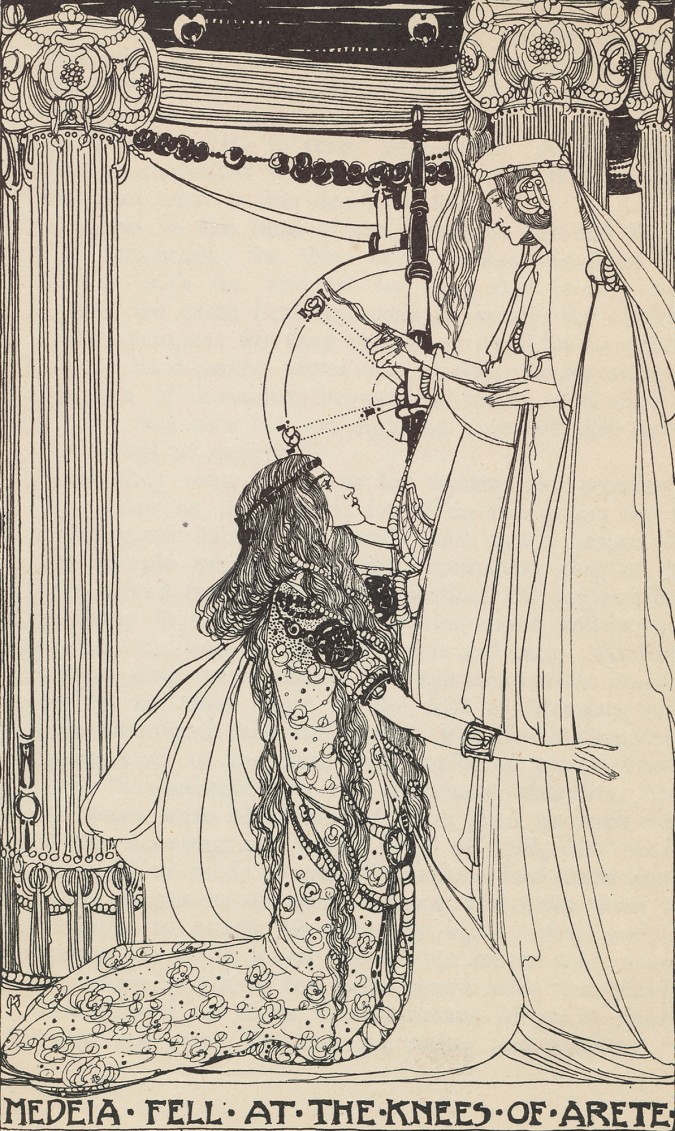
From The Heroes, 1907
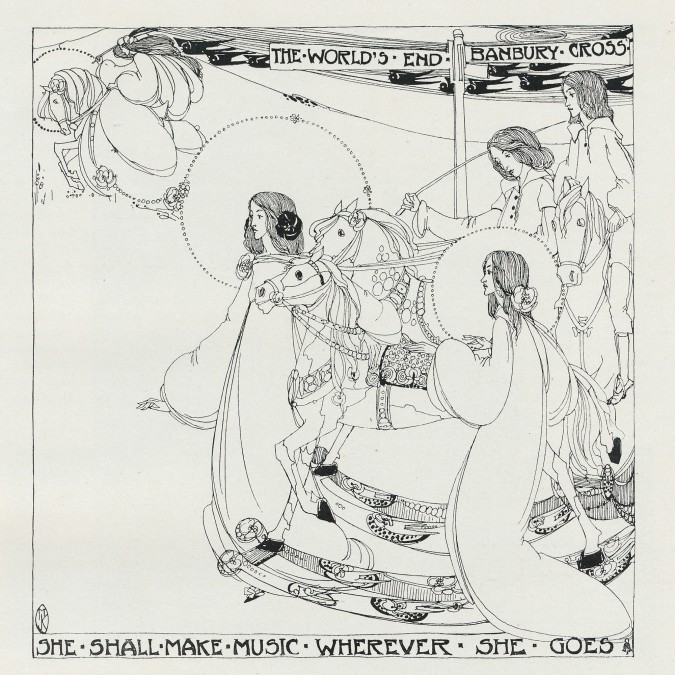
Banbury Cross, From Kunst un Dekoration, 1905
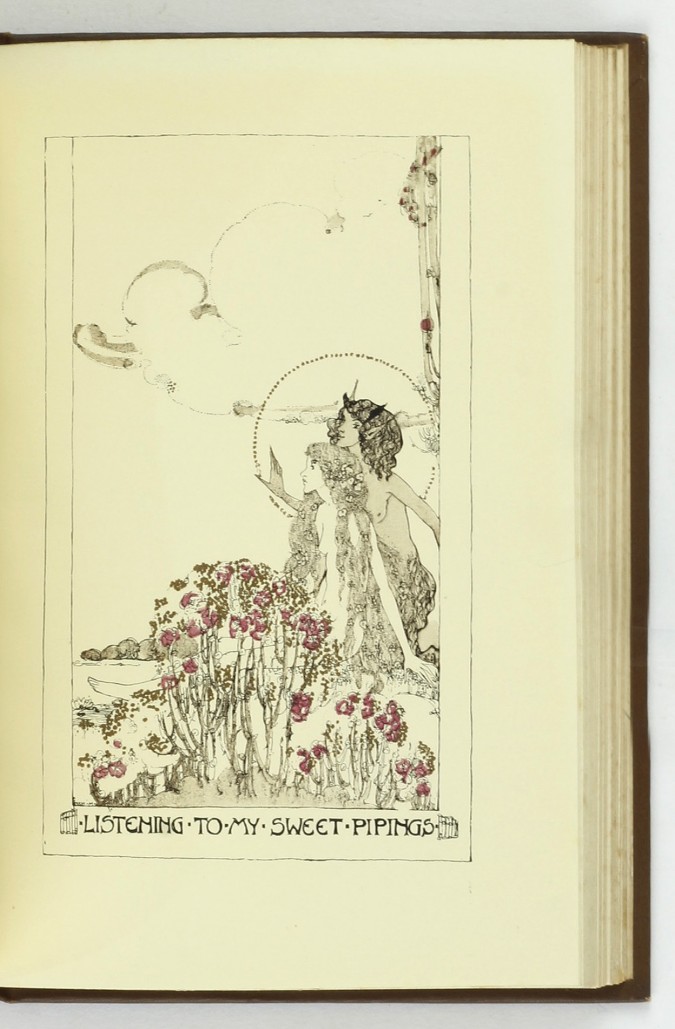
Poems of Shelley, 1906
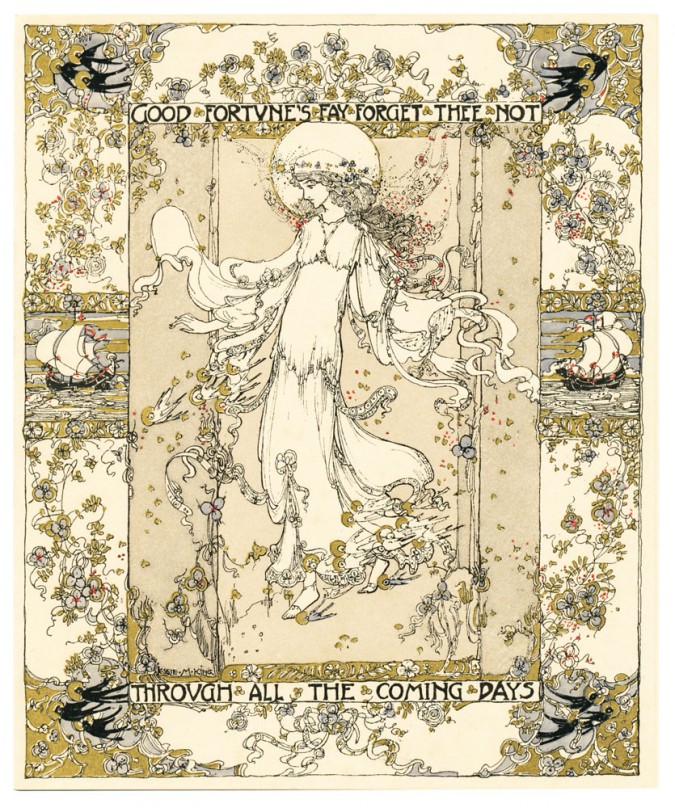
A Christmas Card Design, 1907
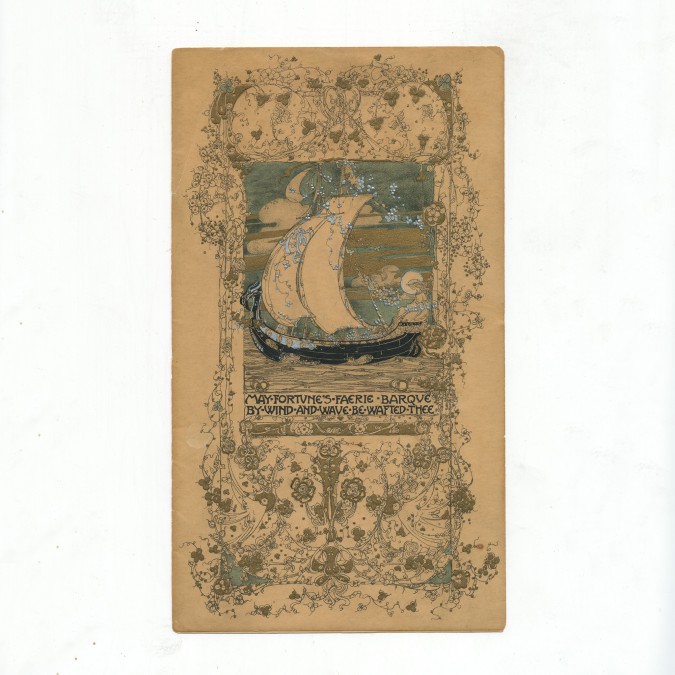
Christmas Card sent by Jessie M King to Agnes Harvey
Browse books and artwork by Jessie M. King
Select Bibliography:
Charles Kingsley, The Heroes, 1903
Sebastian Evans, 'The High History of the Holy Graal', 1903
William Morris, The Defence of Guinevere and Other Poems, 1903
Milton, Comus, 1906
W.B. Yeats, 'The Poems of Spenser', 1906
'Budding Life', 1906
The Poems of Shelley, 1907
Keats, Isabella, or the Pot of Basil, 1907
Dwellings of an Old World Town: A Book of Drawings, 1909
The Grey City of the North, 1910
The City of the West, 1911
Edme Arcambeau, The Book of Bridges, 1911
James Hogg, Songs and Poems of the Ettrick Shepherd, 1912
'Seven Happy Days', 1913
Oscar Wilde, 'A House of Pomegranates', 1915
Jessie M. King, 'The Little White Town of Never Weary', 1917
J.M. Neale, A Carol: Good King Wenceslas, 1919
Rudyard Kipling, L'Habitation Forcee, 1921
Jessie M. King, How Cinderella was able to go to the Ball, 1924
'Marion', Mummy's Bedtime Story Book, 1929
Isobel K. C. Steele, The Enchanted Capital of Scotland, 1945
Comments
Recent Posts
- The Evolution of Crime
- Tour The Bookshop On Your Screen
- The Genesis of Mr. Toad: A Short Publication History of The Wind In The Willows
- Frank Hurley's 'South'
- The "Other" Florence Harrison
- Picturing Enid Blyton
- Advent Calendar of Illustration 2020
- Depicting Jeeves and Wooster
- Evelyn Waugh Reviews Nancy Mitford
- The Envelope Booklets of T.N. Foulis
- "To Die Like English Gentlemen"
- Kay Nielsen's Fantasy World
- A Brief Look at Woodcut Illustration
- The Wealth Of Nations by Adam Smith
- What Big Stories You Have: Brothers Grimm
- Shackleton's Antarctic Career
- Inspiring Errol Le Cain's Fantasy Artwork
- Charlie & The Great Glass Elevator
- Firsts London - An Audio Tour Of Our Booth
- Jessie M. King's Poetic Art, Books & Jewellery
Blog Archive
- January 2024 (1)
- January 2023 (1)
- August 2022 (1)
- January 2022 (1)
- February 2021 (1)
- January 2021 (1)
- December 2020 (1)
- August 2020 (1)
- July 2020 (2)
- March 2020 (3)
- February 2020 (2)
- October 2019 (2)
- July 2019 (2)
- May 2019 (1)
- April 2019 (1)
- March 2019 (2)
- February 2019 (1)
- December 2018 (1)
- November 2018 (1)
- October 2018 (2)
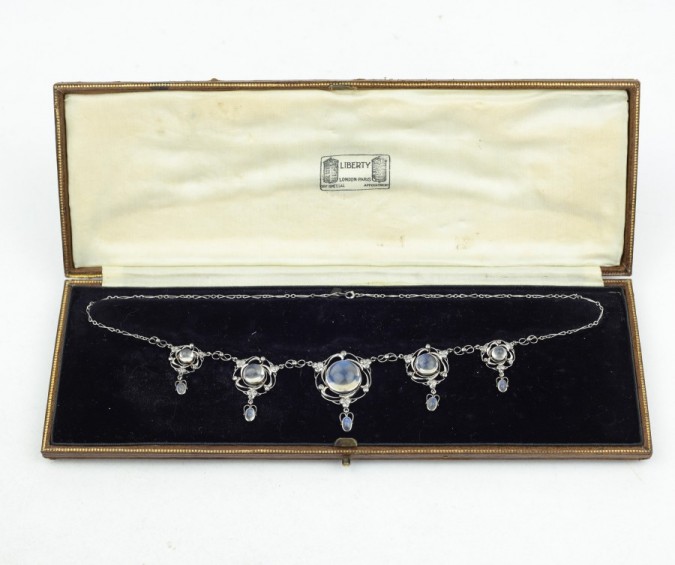
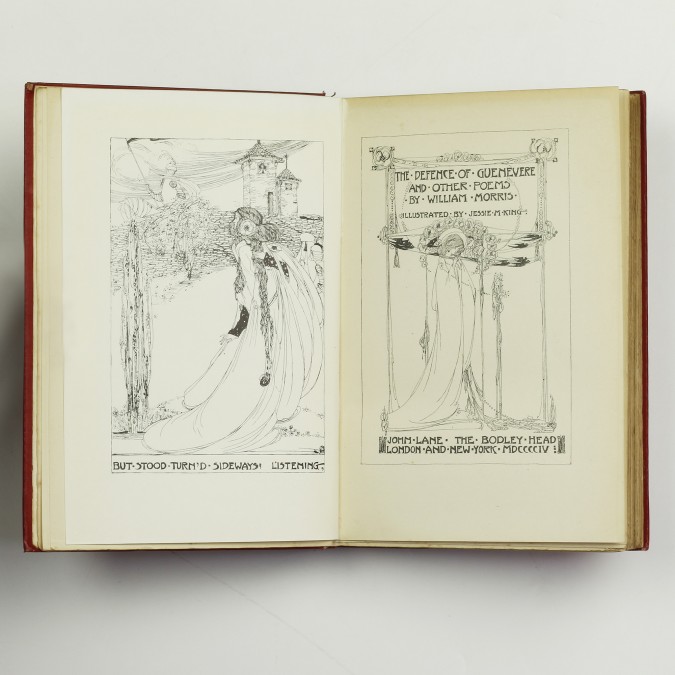
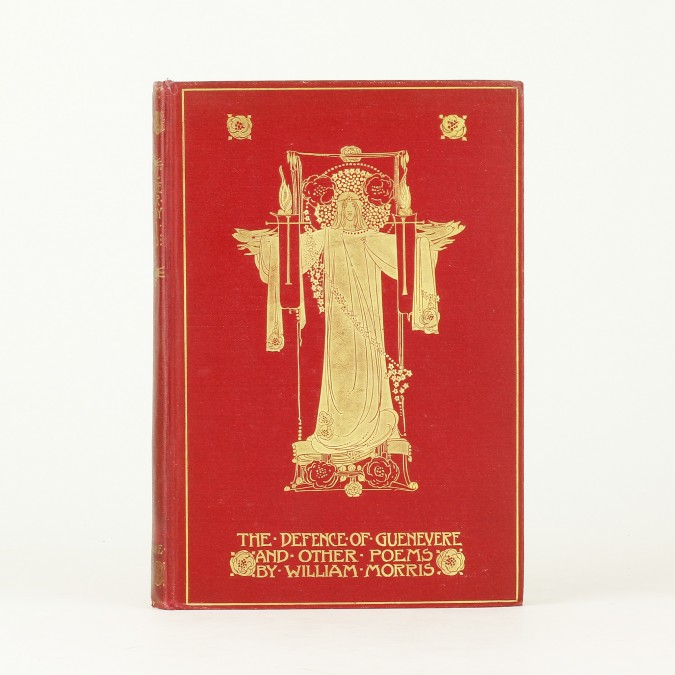
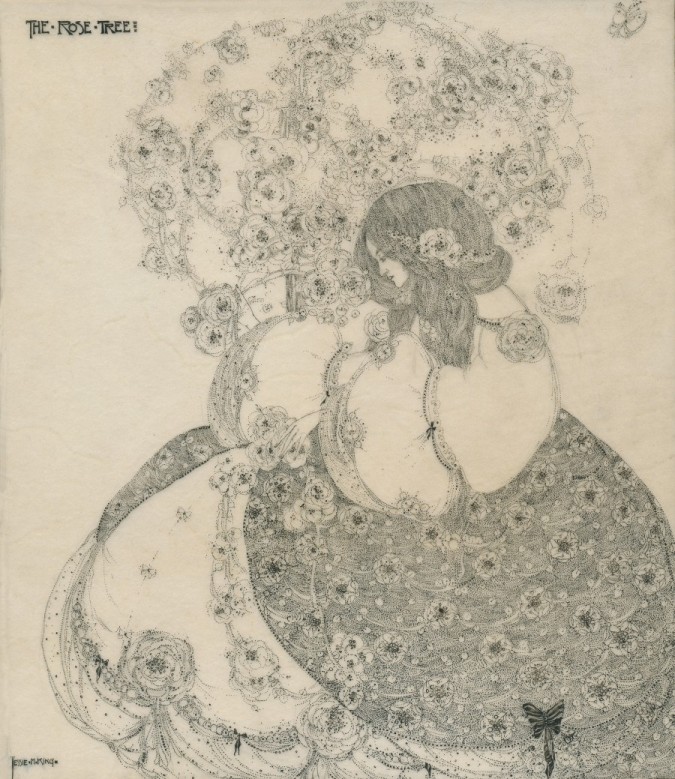
carmenbhenry 02/Feb/2024 15:09
I love how you delved into your blog post. The depth of your analysis is impressive. It brought to mind a conversation on illiciumlondon. I'd love to hear your thoughts on this more. Keep it up!